Master the Pickleball Drop Shot: A Deceptive Weapon for Court Control
Pickleball, a sport that blends elements of tennis, badminton, and table tennis, has surged in popularity in recent years. The combination of unique gameplay and engaging strategies makes pickleball a favorite among athletes of all levels. One of the most pivotal shots in a player’s arsenal is the drop shot. Used effectively, this shot can be a game-changer, leading to scoring opportunities that can catch opponents off guard. In this comprehensive guide, we will delve into the intricacies of executing the perfect pickleball drop shot, exploring its mechanics, the various types, situational uses, common mistakes, and strategies for improvement. Whether you are a newcomer or a seasoned player, mastering this skill will elevate your game and enhance your enjoyment on the court.
Understanding the Drop Shot Technique
The drop shot is a strategic maneuver in pickleball aimed at placing the ball softly just over the net, forcing it to land close to the opponent’s side. It’s not merely a casual flick but a calculated decision that can disrupt an opponent’s rhythm while showcasing finesse and control. Understanding the essence of this technique is crucial as it emphasizes not just the execution of the shot but also its contextual use within the flow of the game.

Definition of the Drop Shot
A drop shot in pickleball is defined as a gently struck ball designed to clear the net by a minimal margin and land softly in the opponent’s non-volley zone, also known as the kitchen. Its primary goal is to minimize the opponent’s reaction time and limit their ability to return the ball with power. The drop shot can be likened to a magician’s trick its success lies in the element of surprise and execution. The nuances of the drop shot require precision in touch and placement and a deep understanding of the trajectory necessary to ensure the ball lands softly where intended.
The mechanics of the drop shot require careful attention to detail. Players must have a delicate touch, using a light, controlled stroke that generates just enough momentum. Unlike more aggressive shots, which focus on speed and force, the drop shot emphasizes finesse, purposely causing the ball to drop shortly after clearing the net. This finesse is particularly effective when executed in conjunction with a player’s overall strategy.
Importance of the Drop Shot in Gameplay
The significance of the drop shot in gameplay cannot be understated. It serves multiple roles in a match controlling the pace, exploiting the opponent’s position, and creating opportunities for subsequent aggressive shots. When utilized effectively, the drop shot can disrupt the opponent’s rhythm and induce errors, leading to scoring opportunities.
Imagine you are in a fast-paced rally, with both you and your opponent exchanging powerful shots. Suddenly, you deploy a drop shot, drawing your opponent closer to the net. They are forced to shift their weight forward, reacting to the unexpected change in pace. This can leave them vulnerable, providing you with an opportunity to capitalize on their momentary imbalance, either by lobbing the next shot or aiming at a more favorable angle.
The drop shot also plays an essential role in strategy, particularly when opposing players exhibit aggressive returns from the backcourt. By mixing up your shot selection and including drop shots, you can keep your opponent guessing, forcing them to adjust and potentially leading to mistakes as they scramble to retract back to defend their territory.
Key Characteristics of an Effective Drop Shot
An effective drop shot shares several common characteristics that make it a successful shot in pickleball.
- Delicate Touch: A successful drop shot requires a gentle touch to ensure the ball clears the net without excessive force.
- Controlled Spin: Applying backspin not only helps the shot drop quickly but also keeps the ball low and difficult to return.
- Strategic Placement: Targeting specific areas, particularly corners and the non-volley zone, increases the chances of scoring by making it more challenging for your opponent to reach the ball.
- Deceptive Execution: The ability to disguise your drop shot can catch opponents off guard, as they may anticipate a more aggressive shot.
Combining these elements allows for a fluid integration of the drop shot into your overall game strategy, making it a versatile skill to enhance your prowess on the court.
Mechanics of Executing a Drop Shot
The mechanics behind a successful drop shot are a blend of proper grip, body stance, and swing technique. Each component plays a crucial role in determining the shot’s effectiveness.
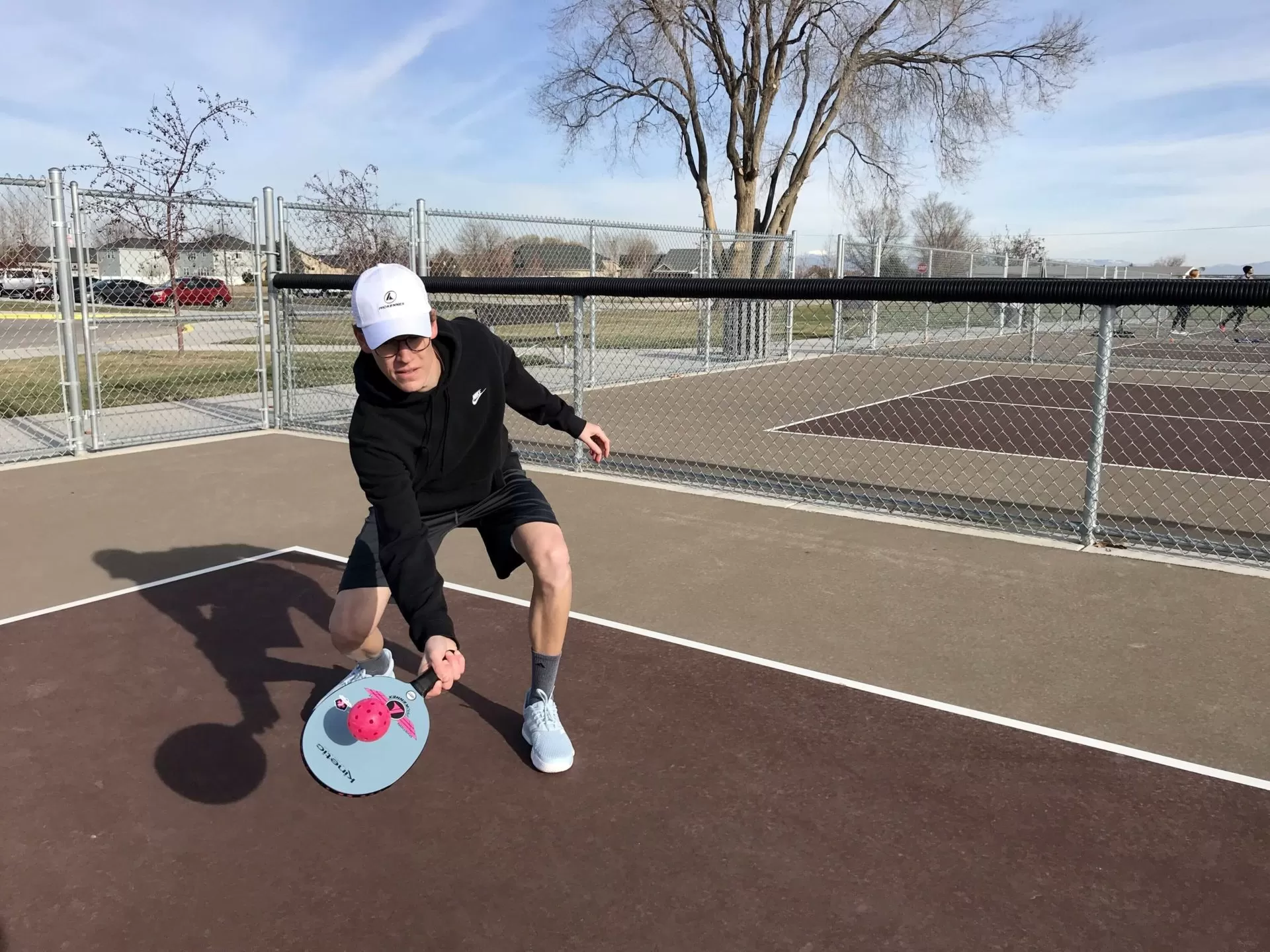
Grip and Paddle Position
When it comes to grip, the continental grip is often recommended for executing drop shots. This grip allows for flexibility between forehand and backhand shots while providing control during delicate contact. The grip is achieved by holding the paddle such that the thumb and index finger form a “V” shape at the handle, giving you the right leverage to control the paddle’s angle and generate the necessary backspin.
Consider the grip as the foundation of a strong building; without the right grip, your entire drop shot may lack the stability and precision needed to be effective. Experimenting with minor adjustments in grip pressure can also significantly influence the ball’s trajectory too much grip may exert unnecessary force, while too little may not provide adequate control.
Stance and Body Positioning
Next comes body positioning and balance. Players should adopt a stance that is slightly crouched, with feet shoulder-width apart and knees bent. This stable stance allows players to stay agile while preparing for the drop shot. Weight distribution should be centered over the feet to provide optimal balance, ensuring an effective follow-through.
Imagine preparing to strike a drop shot as if you were a spring ready to release energy when your stance is stable and your body positioned correctly, it enhances your ability to react and adjust your shot based on the opponent’s position.
Swing Technique for a Successful Drop Shot
The swing technique deployed in a drop shot is characterized by a smooth, controlled motion. Unlike powerful shots that require a full wind-up, drop shots necessitate a short and deliberate swing. Initiate the swing with a gentle pushing motion of the paddle, making sure to brush the ball lightly, imparting backspin as it travels over the net.
Think of your paddle as a feather; using a delicate touch allows it to glide effortlessly through the air, sending the ball just over the net while keeping it within the desired bounds. A key focus point during the swing process is to minimize follow-through, ensuring that the momentum is directed forward and downward, thus controlling the ball’s landing.
Types of Drop Shots
Different scenarios may warrant different types of drop shots. It’s vital for players to familiarize themselves with various techniques to ensure adaptability during play.
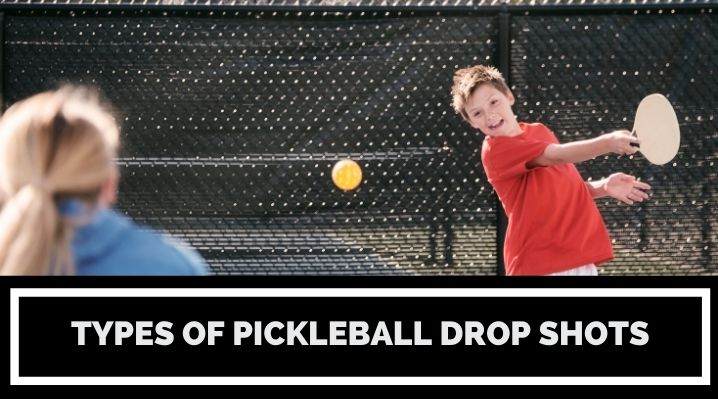
Standard Drop Shot
The standard drop shot is a fundamental technique that comprises softly hitting the ball just over the net. It is most effective when opponents are positioned deep in their court. By executing this drop shot, players can induce their opponents to scramble forward and potentially leave their baseline open. The goal is to maintain control while targeting the kitchen area where even a slight lapse in focus can lead to scoring opportunities.
Soft Spin Drop Shot
The soft spin drop shot employs backspin, allowing the ball to die quickly after clearing the net. This variation is particularly beneficial when players aim to slow down the rally and complexify the game for their opponent. The unique bounce caused by the backspin can catch opponents off guard, making it difficult for them to return the ball forcefully.
Angle Drop Shot
The angle drop shot is directed towards the sideline, aiming to place the ball just over the net at a sharp angle. This keeps the opponent on their toes and forces them to cover more ground, potentially creating openings on the opposite side of the court. The angle drop shot can be particularly useful when opponents are centered and unprepared for sudden directional changes.
Cross-Court Drop Shot
The cross-court drop shot targets the diagonal corners of the court. This allows players to challenge their opponents’ lateral movement while also aiming to catch them off-balance. When executed correctly, this shot can create a two-fold advantage: it opens up space for the next shot and keeps pressure on the opponent.
Dink Drop Shot
The dink drop shot is characterized by a gentle and delicate touch. This shots become pivotal during net play when sustaining rallies. The execution of a dink drop shot typically engages in a series of soft exchanges at the net, emphasizing precision and control rather than power. It can set the stage for a drop shot battle, captivating the audience by showcasing strategic play among competitors.
Situational Use of the Drop Shot
The drop shot should not only be executed but utilized within strategic contexts; situational awareness is crucial in pickleball gameplay.
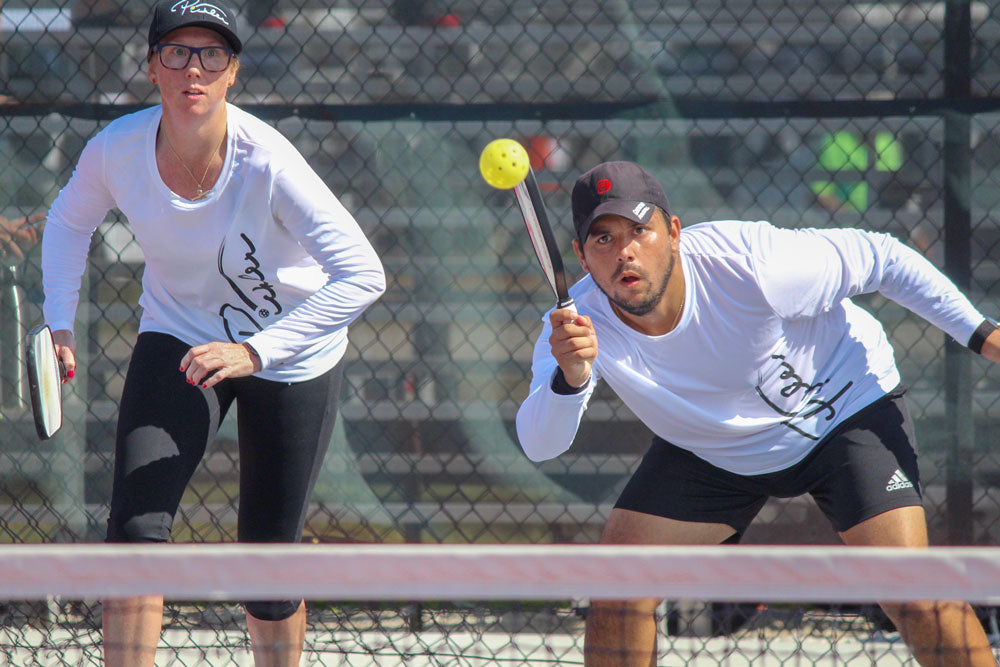
When to Use the Drop Shot Against Aggressive Players
Against aggressive players, the drop shot can serve as a strategic tool to counter their tendencies. When faced with opponents who play from the baseline or possess strong serves, deploying a drop shot can force them to redirect their focus and reevaluate their approach. As they rush towards the net in an attempt to retrieve the drop shot, they become more susceptible to follow-up shots, leading to potential scoring opportunities.
Utilizing the Drop Shot Near the Kitchen Line
The non-volley zone, or kitchen line, is a prime area for drop shots. Players positioned near this zone can use drop shots to create tension against their opponents, leading to awkward attempts at volleys. By dropping the shot just over the net, players can dictate the pace of the game, forcing their opponents to react quickly, potentially resulting in mistakes or weak returns.
Strategic Timing for Drop Shots
The third shot drop is often regarded as one of the most critical moments in a rally, significantly influencing a player’s chances of winning the point. Proper execution of the drop shot at this phase can set the tone for a player’s offensive plays. Ideally, players should aim to drop around 70% of the time during the third shot, underscoring its strategic importance in transitioning the play towards the net and asserting control.
Common Mistakes in Drop Shot Execution
As with any skill in pickleball, avoiding pitfalls is essential for successful drop shots. Understanding common mistakes is crucial to refining this technique.
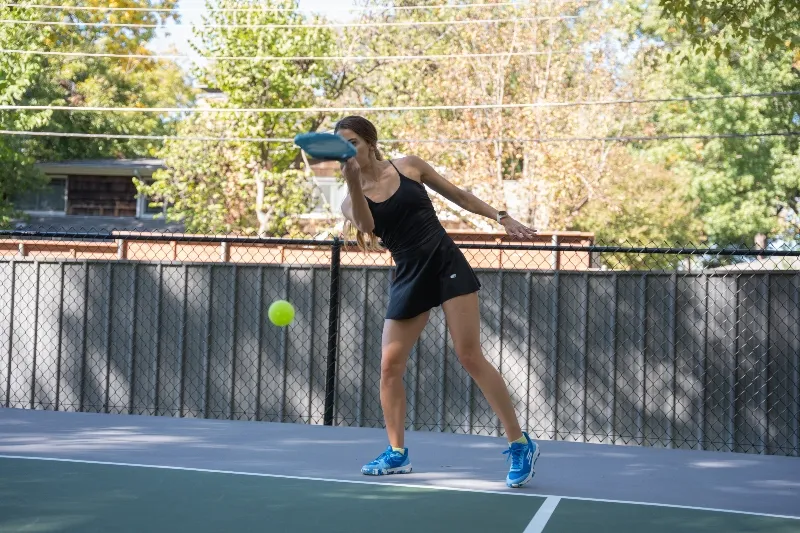
Over-Hitting the Drop Shot
One common mistake players encounter is over-hitting the drop shot. Striking the ball too forcefully may lead to the ball sailing high and floaty, providing opponents ample time to react and attack. The objective of the drop shot is to maintain control, and excessive force contradicts this purpose.
Incorrect Net Clearance
Another frequent mistake is failing to achieve adequate net clearance. Hitting the ball too early or neglecting proper judgement on timing can cause the drop shot to land at the opponent’s feet. This can leave them with an easy opportunity to return the shot with power. Ideally, players should aim to hit the ball after it has bounced, allowing for better lift just over the net.
Failing to Follow Through
A characteristic mistake during execution is failing to follow through properly. The drop shot’s gentle nature requires a soft, controlled swing, emphasizing a short follow-through rather than a complete swing. Skipping this aspect can compromise the shot’s effectiveness, leading to poorly placed shots that lack the desired control.
Practicing the Drop Shot
Consistent practice is crucial for improving drop shot skills. Players should dedicate time in training to refine their technique.
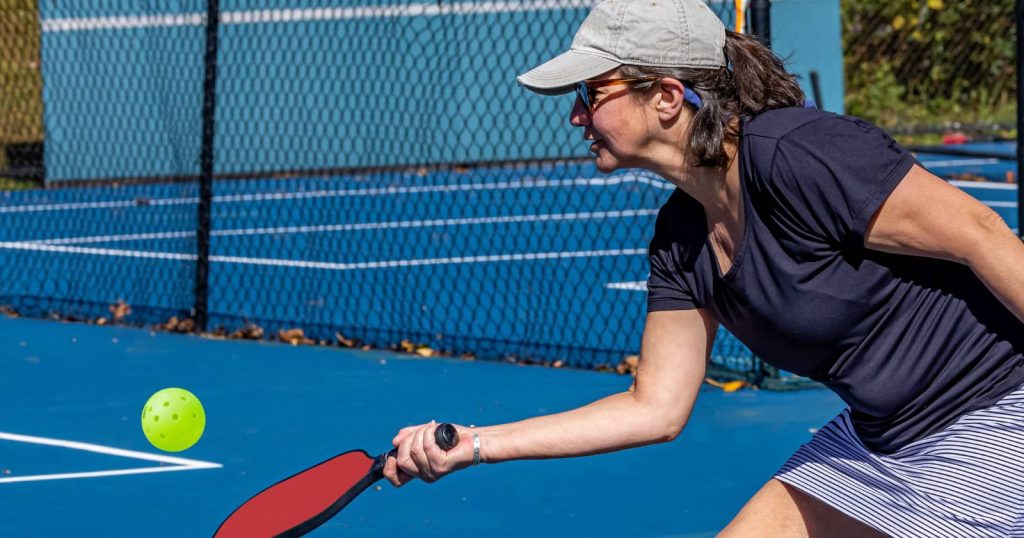
Effective Drills for Improving Drop Shot Skills
- Solo Drop Shot Drills: Focus on perfecting grip, body positioning, and paddle angle in isolation. These drills allow players to hone their touch without the pressure of competition.
- Partner Drop Shot Drills: Collaborate with a partner and practice hitting drop shots incrementally in terms of variation, spin, and placement. This exercise enhances communication and accuracy.
- Game Situation Drills: Simulate game scenarios wherein drop shots are paramount, allowing players to familiarize themselves with pressure situations.
Targeting Specific Areas in Practice
When working on drop shots, aim for precise areas such as corners or the non-volley zone during practice sessions. Focusing on specific trajectories, spin, and placement enables players to develop control and accuracy. Testing different angles can help create a diverse repertoire for strategic placements in matches.
Incorporating Drop Shots in Match Play
Including drop shots within match play embodies strategic performance. Players should learn to discern when to deploy drop shots amidst rallies, considering the positioning of their opponents, utilizing drop shots strategically in conjunction with established patterns of play.
Analyzing Opponent Reactions to Drop Shots
Understanding the opponent’s reactions to drop shots can significantly influence gameplay decisions.
Reading Opponent Positioning
Effective anticipation begins with observing the opponent’s positioning and behavior. Factors such as grip, body posture, and swing tendencies can be clues to their likely response. As players gain insight into the opponent’s reaction patterns, they can adapt their own strategies accordingly.
Adjusting Strategy Based on Opponent’s Response
Adapting strategies based on how opponents react to drop shots is vital. If an opponent consistently struggles, continue to target their weaknesses. Conversely, a player may need to mix up shot selection if the opponent effectively counters drop shots.
Creating Opportunities from Opponent’s Movements
A well-placed drop shot can force the opponent into a corner, resulting in weak or awkward returns. Adjusting one’s positioning after executing a drop shot allows for the potential follow-up moves or aggressive plays aimed at capitalizing on the opponent’s current state.
Advanced Techniques for Drop Shots
Mastering advanced techniques can augment a player’s drop shot game, ensuring adaptability across various match scenarios.
Blending Drop Shots with Power Shots
Creating variability in shot selection is key. Alternating between soft drop shots and aggressive power shots disrupts the opponent’s expectations, forcing them to adjust repeatedly. Incorporate a mix of techniques to maintain pressure and maintain an offensive edge.
Adding Spin Variations to Drop Shots
Incorporating spin variations can further complicate an opponent’s return. Experimenting with topspin, backspin, and sidespin provides diverse shot profiles. Mastering spin allows players to capitalize on different court bounces, prompting errors from opponents who may underestimate these nuances.
Using Deception in Your Drop Shots
Using deception can be an effective tactic. Varying swing mechanics or body positioning adds an element of surprise, making it challenging for the opponent to predict the shot. With practice, players can create a repertoire of deceptive techniques that keeps opponents guessing.
FAQs
What are drop shots in pickleball?
Drop shots in pickleball refer to softly struck shots aimed at landing just over the net and in the opponent’s non-volley zone. They are designed to catch opponents off-guard and exploit any potential weaknesses in their positioning.
How to perfect the pickleball drop shot?
To perfect the pickleball drop shot, focus on grip, stance, and swing control. Make a conscious effort to practice regularly, emphasizing a gentle, controlled technique, while varying placement and spin to build a well-rounded shot.
Where to hit the third shot drop in pickleball?
The third shot drop is typically aimed to land in the kitchen area (non-volley zone) just over the net. The goal is to ensure a gentle drop that forces opponents to scramble when returning.
What is an illegal drop serve in pickleball?
In pickleball, drop serves can be executed legally as long as players follow serving guidelines. The ball must be hit below the server’s waist and land within the designated service area. There is no specific restriction on “drop serves.”
What is the most difficult shot in pickleball?
The drop shot is often considered one of the most challenging shots to master due to the required precision and nuanced touch needed to control the ball’s landing.
Conclusion
The pickleball drop shot is an invaluable shot that, when executed with precision and strategy, can serve as a significant advantage during matches. It exemplifies finesse in a sport that often relies on power and speed, making it a skill worth mastering for players of all levels. By understanding key mechanics, recognizing situational uses, and honing execution through practice, players can elevate their game and enhance their chances of success. The combination of effective drop shots, strategic adaptability, and keen observation of opponents will undoubtedly contribute to a more dynamic and enjoyable experience on the court. With dedication and consistent practice, anyone can learn to master this essential shot, gaining a competitive edge in the world of pickleball.
